Cylon Models: Difference between revisions
More actions
m →Physiology: when using "final five" as adjective, like "final five Cylons" it probably shouldn't be capitalized. Unlike "the Final Five." |
|||
| Line 13: | Line 13: | ||
While remarks by [[Number Six]] in the miniseries state that "those [walking chrome toaster] models are still around. They have their uses," it is most likely that she is referring to the modern Centurions (below), which seem to have replaced the Model 0005 entirely. | While remarks by [[Number Six]] in the miniseries state that "those [walking chrome toaster] models are still around. They have their uses," it is most likely that she is referring to the modern Centurions (below), which seem to have replaced the Model 0005 entirely. | ||
A relatively small group of this model survive the "upgrade" on the later destroyed [[Guardian Basestar]]. ("[[Razor]]") | |||
==Modern Centurion== | ==Modern Centurion== | ||
Revision as of 13:28, 9 April 2008
- For information on the Original Series Cylons, see Cylons (TOS).
| Part of the series on |
Centurion Model 0005

Model Name: Cylon Centurion
- Main article: Cylon Centurion Model 0005
The Centurion Model 0005[1], glimpsed briefly in two scenes of the Miniseries, was apparently the latest Cylon model to have been extensively documented by Colonial authorities after the Cylon War. It is a primitive model, resembling a short, clumsy humanoid with a single red eye - or as some of the Colonials contemptuously referred to them, "chrome toasters". According to Saul Tigh,[2] they had a distinctive "stink" of machine oil.
These models were apparently the instigators of the Cylon rebellion, or their immediate descendants. They fought in all the major engagements of the Cylon War, including the boardings of Brenik and Galactica. A painting by Monclair depicts a massive melee between early-model Cylons and joint Aerelon-Caprican ground forces.
Not only were these models sentient, they were far from emotionless — in his recollection of the Brenik, Saul Tigh recalls their vicious tactics in hand-to-hand combat: "The first one was Duncan Raverty. I found him in the corridor. His guts were strewn around on the floor. Y'know, at first I couldn't figure out why the Cylons would bother doing something like that [...] You had to look into their red eye-slit. They hated us. They hated us so much it wasn't enough just to kill us" ("Scattered", deleted scene).
While remarks by Number Six in the miniseries state that "those [walking chrome toaster] models are still around. They have their uses," it is most likely that she is referring to the modern Centurions (below), which seem to have replaced the Model 0005 entirely.
A relatively small group of this model survive the "upgrade" on the later destroyed Guardian Basestar. ("Razor")
Modern Centurion
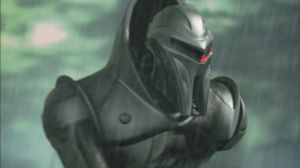
- Main article: Cylon Centurion
The current mainstay of Cylon ground forces, the modern Centurion is a taller, swifter and more agile unit than the Model 0005. Its "fingers" serve as edged weapons in close-quarters combat, and can retract to make way for projectile weapons built into its forearms.
There are apparently two armor configurations - the Centurions encountered by Lt. Karl Agathon on occupied Caprica were susceptible to normal small-arms fire, while a boarding party dispatched to Galactica in a boarding action could only be impeded by explosive rounds (Valley of Darkness).
While the earlier Centurion models presumably took a leadership role in their war against the Colonials, modern Centurions appear completely mute and are subservient to the human models. To prevent an uprising of their own, the human models did not design the modern Centurion with any sentience.[3]
Cylon Spacecraft
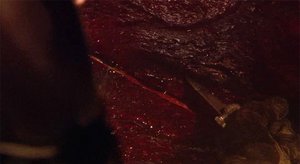
- Main article: Cylon Spacecraft (RDM)
The current model Cylon Raider is an autonomous craft (Miniseries), apparently capable of operating at fair distance from any command vessel (Tigh Me Up, Tigh Me Down; Final Cut). Captain Jackson Spencer, encountering the newer model Cylon Raider for the first time, expresses shock that "nobody's flying these things." Lt. Kara Thrace later discovers that the Raider she shoots down is "alive". She removes most of its organic parts before returning with it to Galactica. Sharon Valerii, a Cylon sleeper agent, guesses that the Raider is a Cylon in its own right, although "more of an animal, maybe, than the human models... like a pet" (Six Degrees of Separation).
Another Sharon copy confirms that Raiders "download" and reincarnate. She echoes the earlier statement about the animal-like nature of Raiders: "A raider's much like a trained animal, with the basic consciousness and survival instinct."
A basestar is also an integrated blend of flesh and machine (Kobol's Last Gleaming, Part II). The ship is commanded by a group of Humanoid Cylons, and has a living computer, the Hybrid, which is essentially the basestar's brain and takes orders from humanoid models (more on Hybrid below). Hybrids do not function autonomously.[4]
Human Models
- Main article: Humanoid Cylons
At some point at least two years prior to the Fall of the Twelve Colonies, the Cylons appear as an organic model that's almost completely indistinguishable from a human being. While twelve models were created, the origins and creators of the humanoid Cylon are a mystery. The history or fate of five of these models is deliberately (by design or taboo) suppressed by the seven active models.[5]
These were used to quietly and effectively infiltrate the Colonial defense forces, with agent models such as Number Six gaining access to secret military technology, and sleeper agents such as Sharon "Boomer" Valerii being planted within the Colonial Fleet itself. These sleeper agents are programmed with false memories and appear genuine. Unplanned discovery of their true nature can be extremely disturbing for these units, and their behavior is not always predictable.
Only slight chemical differences reveal human from Humanoid Cylon. Humanoid Cylons also apparently differ from humans in two significant ways.
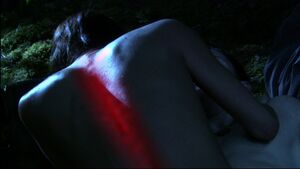
Reproductive Difficulties
It is impossible for two Cylons to reproduce with each other, and as result the Cylons begin cross-breeding experiments with humans, which results in the pregnancy of the Caprica-copy of Sharon Valerii. Cylon beliefs attribute this to the apparent inability of Cylons to feel love, which they believe to be a crucial element of the process. The forceful impregnation of human women however was unsuccessful (The Farm).
The second human-Cylon hybrid is Nicholas Tyrol. At the time of the child's conception, his father Galen Tyrol was unaware that he is a Cylon ("Lay Down Your Burdens, Part II", "Crossroads, Part II").
Physiology
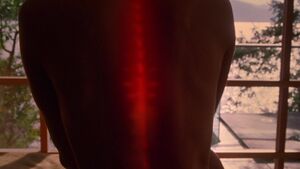
On two occasions, the vertebrae of human-model Cylons have been seen to emit a red glow visible through the skin during sexual intercourse (Miniseries, "Six Degrees of Separation"). On one occasion, the eye of one of the final five Cylons is seen to emit a red glow ("He That Believeth In Me").
Other elements of Cylon humanoid physiology are light-sensitive. Tissues within in their forearms function as data links which can be crudely interfaced with Colonial fiber-optic networks (Flight of the Phoenix), but are primarily for accessing the Cylon optical network known as the datastream ("Torn", "A Measure of Salvation").
Synthetic compounds unique to Cylon physiology ionize when subjected to plutonium radiation, forming the basis of Dr. Baltar's Cylon detector.
Cylon nervous systems possess silica pathways. A legacy of their evolution from mechanical Cylons, this technology remains in the humanoid models, although it appears to have been integrated at the molecular level, resulting in nervous systems macroscopically identical to those of humans. Silica pathways are susceptible to some forms of radiation, such as the one surrounding the Ragnar Anchorage. Prolonged exposure to such radiation will gradually take a physical toll on a humanoid Cylon (Miniseries, "Bastille Day"), and possibly impair the resurrection process. With other forms of radiation, humanoid Cylons possess greater (but not complete) resilience against radiation poisoning than humans (The Passage).
Known Models
In the Miniseries, somewhat ambiguous comments by Caprica-Six and a note left for William Adama (presumably by Gaius Baltar) indicate that there were only twelve humanoid models at the time of the Fall of the Twelve Colonies.[6] Of the twelve human models, eleven have been revealed as of the episode "Crossroads, Part II."
The "final five"

The existence or knowledge of the five remaining models appear to be something of a taboo in Cylon society. When Baltar mentions their absence to Caprica-Six he is told not to talk about them. The identities of these five models appear to be suppressed or missing from the Cylons' collective knowledgebase.
A Number Three model believes that the five silhouetted figures she sees in a vision of Kobol's ancient Opera House while she is in the "space between life and death" prior to resurrection are images of the final five.
Inside the Temple of Five, Number Three manages to return to the "space between life and death" and sees the faces of the five and retains her memories of them for the first time. She recognizes one of the five while she is in their presence. Although her consciousness returns to the temple, she promptly dies before she can reveal who she saw. Some fans have suggested that the figure she recognizes and "apologizes" to is Colonel Saul Tigh, whom she probably saw while he was in captivity on New Caprica. Her "apology" towards him could be been in relation to his eye, which the Cylons removed while he was held in a Cylon Detention Center. Her consciousness, and the consciousnesses of all other Three models has been boxed by the other Cylons and all the knowledge of the five has been boxed with her, for the time being (Rapture). Since only the Threes have seen these figures, and because the Temple itself was designed for descendants of the twelve tribes and not the Cylons, the actual nature of the final five remains a mystery.
As Saul Tigh, Galen Tyrol, Samuel Anders and Tory Foster approached the Ionian nebula, a strange event brings them physically together to realize that they are Cylons. The final Cylon model remains a mystery.[8] (Crossroads, Part II).
Hybrids
- Main articles: Hybrid, First Hybrid
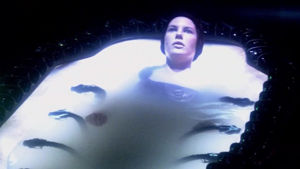
In addition to the humanoid Cylons, there is a second type of humanoids, known as the Hybrids. Not to be confused with the Cylon/human hybrid children, Hera Agathon and Nicholas Tyrol, the Hybrids aboard basestars resemble humanoid Cylons, but are another type of Cylon similar to the autonomous bio-mechanical Raiders. They are specially constructed living computers that manage the autonomic functions of the basestar. The Hybrids are so integrated into the basestar's functionality that they are, for all practical purposes, the basestar. Athena claims that the Hybrids were eventually phased out of use aboard baseships, but those who already exist continue to serve their function (Razor).
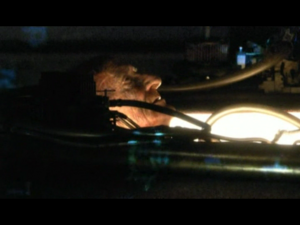
The First Hybrid created from the Cylons' experimentation with human beings possesses many of the same traits that the modern Hybrids exhibit, only with a few distinct differences. The First Hybrid, although it possesses the same metaphysical perception as its descendants, is considerably more lucid and speaks in coherent, though slightly ambiguous, sentences. Like the modern Hybrids, the First Hybrid functions as the central computer of its basestar, but it also appears to function as the basestar's command and control, given the absence of modern humanoid Cylons aboard. While Athena claims the First Hybrid is an evolutionary dead-end and was abandoned by the Cylons, the Hybrid itself claims that its "children" see it as a god. The First Hybrid was destroyed along with its basestar in the Battle of the Guardian basestar, and it is currently unknown whether or not it was the only one of its kind.
Organizational Relationships
At this point only limited knowledge exists regarding the Cylon hierarchy's nature. The humanoid models, as the most evolved form of Cylon, appear to be in charge of all subsequent models, such as the Centurions, Raiders, and Hybrids. Caprica-Six's statement in "Downloaded" that Cylon culture is based on unity and that celebrities such as herself are something new implies that there is no single leader [9]. Instead, each model appears to be equal in terms of power and authority and the Cylons appear to make critical decisions based on consensus, or failing that, majority opinion. One or two representatives from each available model gather and discuss matters in a forum-like environment then hold a vote on what course of action to take. Each model gets one vote that appears to represent the opinion of every copy of that model (except in one known instance where Caprica-Six disagrees with the other Sixes). The Centurions, Raiders and the baseship Hybrids are not permitted a vote in the decision making process ("Occupation" through "A Measure of Salvation").
One instance where a Number Three model goes against the collective will of her fellow models and ultimately imposes her will over the rest is considered so radical that every Number Three copy is boxed for disrupting the unity of Cylon race ("The Eye of Jupiter", "Rapture"). Just before being boxed a Three indicates to one of the Cavils that she does not know who programmed the humanoid Cylons or why. However, unlike the modern Hybrids, the first successful Hybrid appears to exert direct control over its own basestar and Cylon Centurions. The Hybrid claims that his "children" consider him to be a god. The exact meaning behind this statement is not yet known (Razor).
References
- ↑ This model was included in the miniseries primarily as an homage to the Original Series. Within the context of the Re-imagined Series, the Model 0005 is over 40 years old, and was the last assumed appearance of the Cylons after the war.
- ↑ From "Resistance", deleted scene
- ↑ Ron Moore, from blog entries on January 20th, 2006, confirms "the Centurions are not sentient[,] and their memories/experiences are not downloaded into new bodies when they die." William Adama notes this to his son in the episode, "Exodus, Part I."
- ↑ In both these cases, the distinction between a "Cylon" and their own semi-sentient technology becomes increasingly blurred — interestingly, the same problem that led to the Cylon War in the first place.
- ↑ Supported from dialogue with Gaius Baltar and Caprica-Six in the episode "Torn", and the behavior of Cavil and the decision to box all Number Three units in "Rapture".
- ↑ Humanoid Cylons are constructs, archetypes of human behavior that are not and never were human, as clarified by Ronald D. Moore in an interview on "The Chase Show", hosted on the SF webcast news site TheFandom.com.
- ↑ On his Live Journal, Aaron Douglas told fans that he is "Number 12", which he got to choose. However, the validity of this comment is unknown.
- ↑ Ron Moore has stated in multiple interviews that clues have been left behind in past episodes.
- ↑ Like the Imperious Leader in the Original Series.
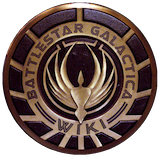



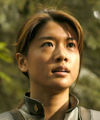



![Galen Tyrol[7]](https://media.battlestarwiki.org/w/thumb.php?f=Tyrol_Cylon.jpg&width=120)


